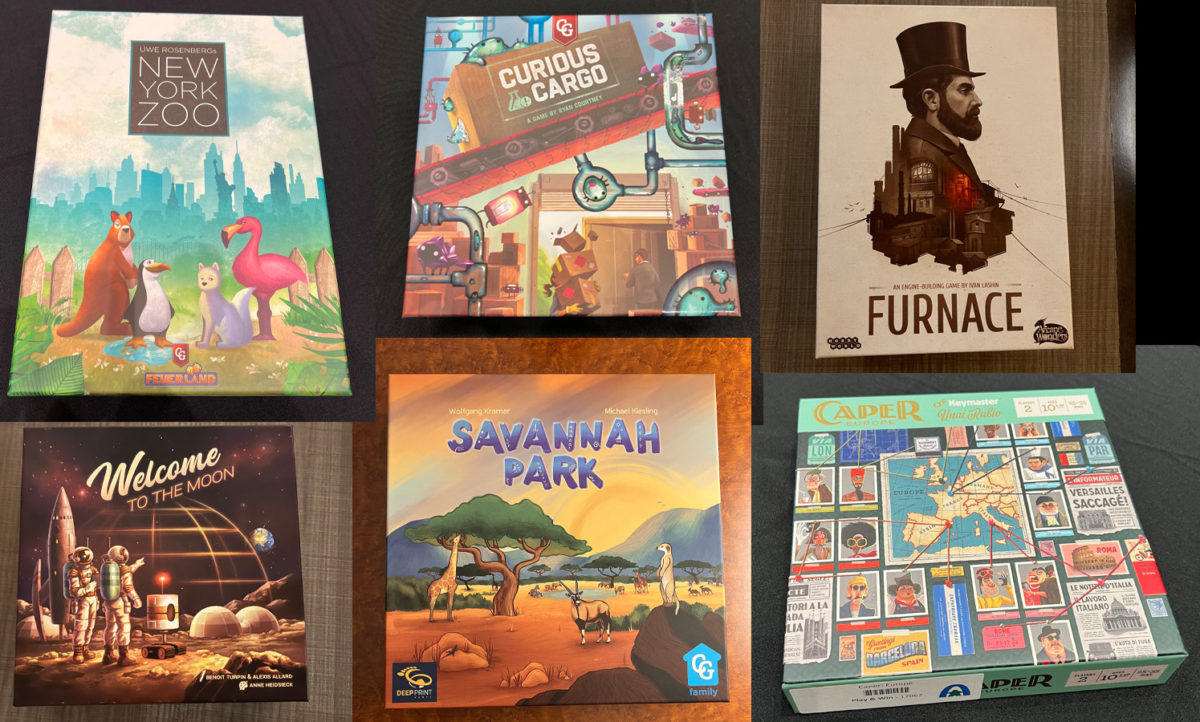Got a bit of a late start to the day, but I think we arrived and got our badges and everything by 10:30 or 11. Still, it wasn’t too busy. This year, the organizers split the main hall into two sections, one mask required and one mask-optional. Additionally, of the two playing areas upstairs, one was mask required and the other was mask-optional. The mask-optional areas seemed to be a bit more busy more of the time, but both areas got substantial use (and playing in the mask-required areas was a lot quieter).
Caper: Europe
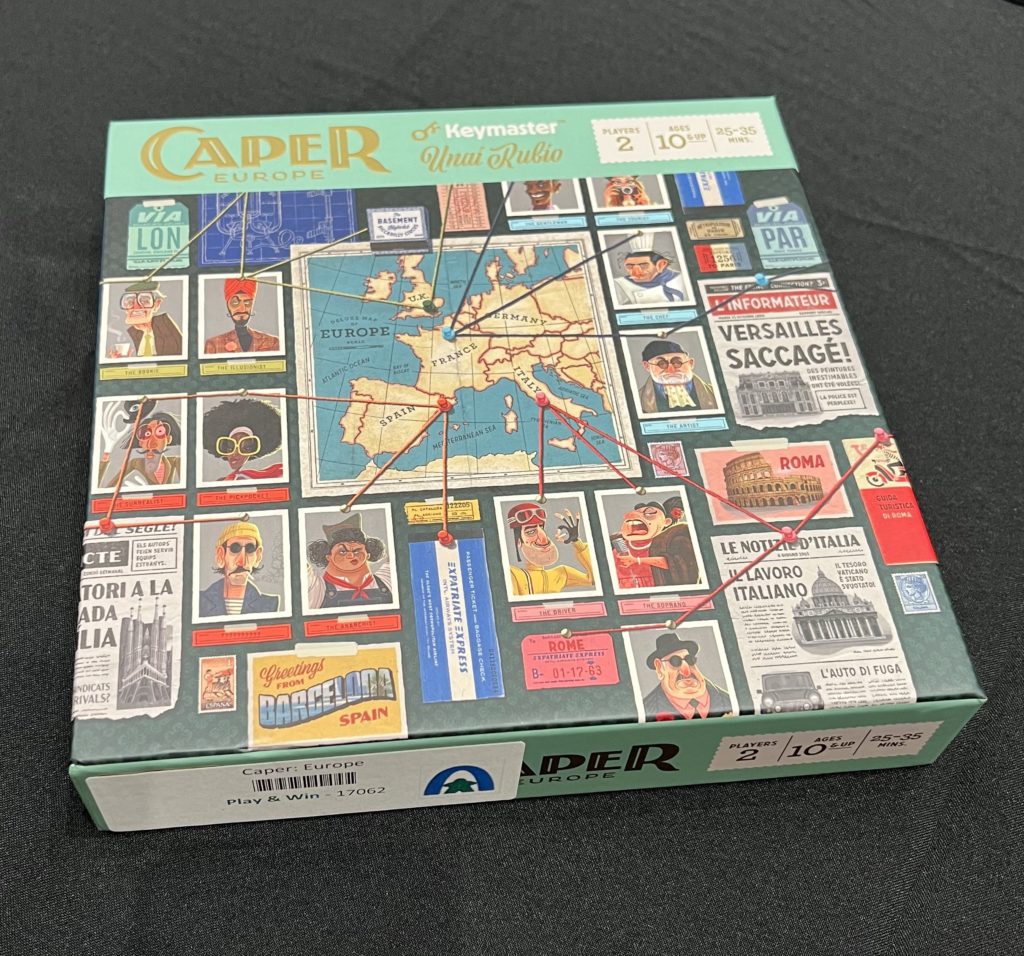
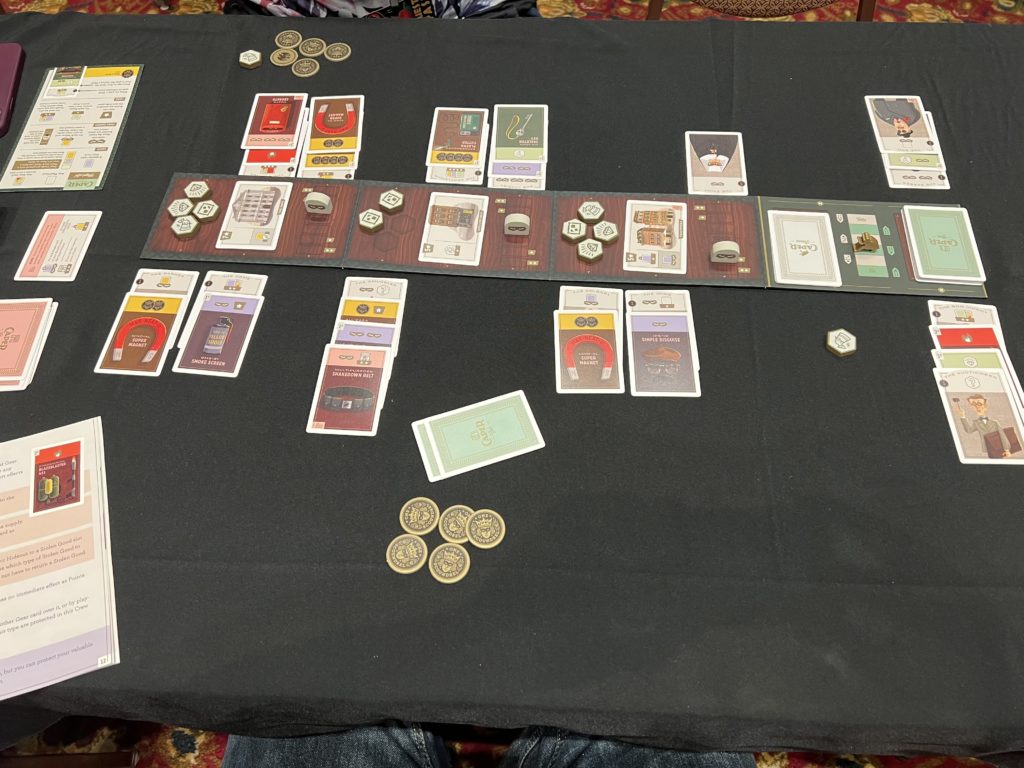
The first game we played was Caper: Europe. Really enjoyed this one.
Caper: Europe is a two-player game where you draft cards to try and control locations and score points. You run a spy network, trying to take over three locations in whatever city you’re playing in that game. You deploy spies and equip them to steal loot, tip the location in your favor or score points directly.
The card drafting works well, though it took me some time to wrap my head around the tempo. Each round you’re drawing a different number of cards, so how many times you pass the cards back and forth changes.
As you build up your spy network over the course of the game, your options increase, but it never feels overwhelming. Your strategy may adapt according to what the other player does or what cards come out, but it rarely felt like I didn’t have a meaningful choice to make.
There are four cities included and within each city you don’t use all the locations each time (and of the other cards, you might discard rather than play with them), so replayability feels very high. We played twice, each of us winning one game and each game decided by only one point.
The art is very appealing and the components feel nice. It plays quick once you understand what you’re doing. I liked this one quite a bit.
New York Zoo
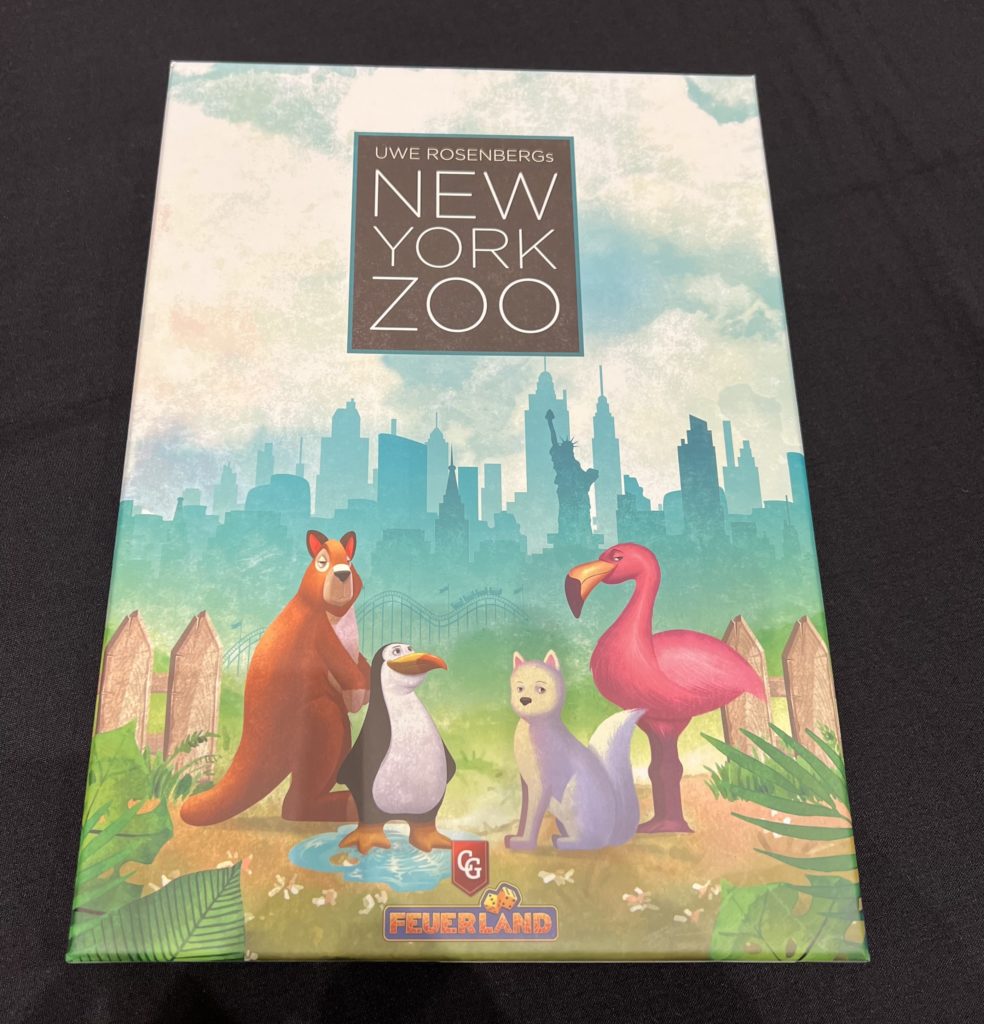
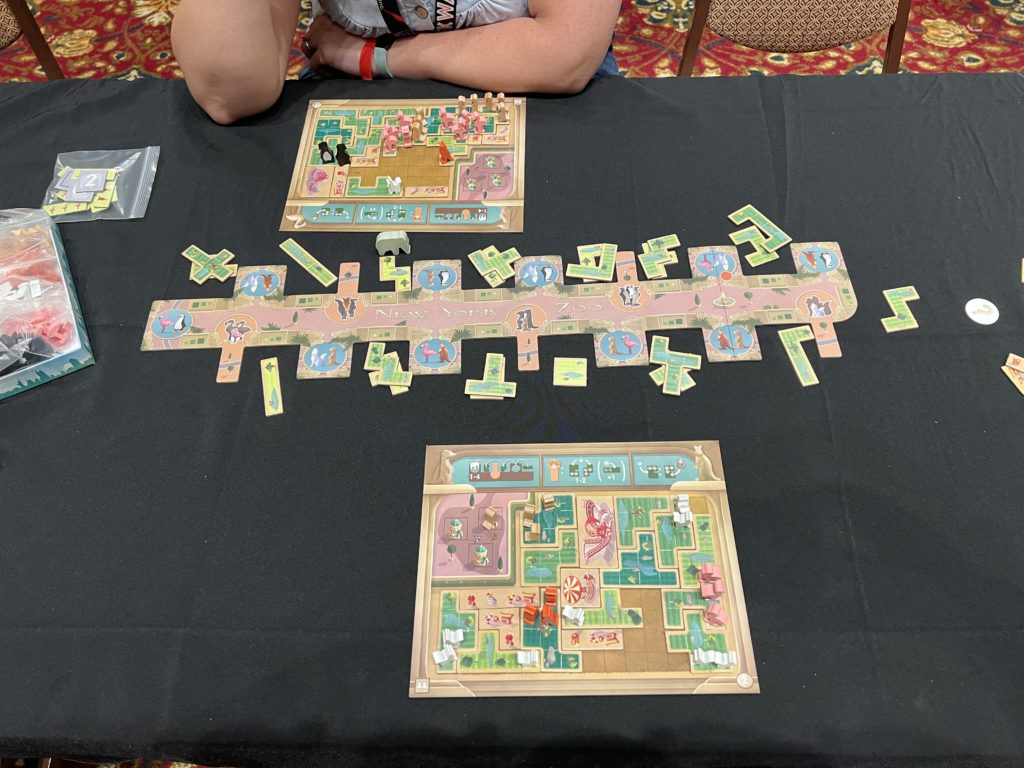
Next up was New York Zoo, another Uwe Rosenberg tile-laying game. Previously we’ve played Patchwork, Cottage Garden, Indian Summer and Spring Meadow, and this is in a similar vein. It adds enough new to keep it interesting. I liked it.
You are building a zoo. You place enclosures and fill them with animals. Enclosures with two or more animals will sometimes breed and produce another. When an enclosure is filled, you earn a bonus tile that can help you fill in odd holes in your board. Whoever completes their zoo first wins.
As I mentioned, the basic mechanics of “fill up this space with differently-shaped tiles” duplicate other games by this designer. But the strategy in choosing and placing animals and the cascading effect they can have when breeding adds a new level.
Again, the decision space is limited (you can choose from a few options to begin your turn, once you’ve made that choice, you usually have a few options for resolving your turn, and that’s about it). There are enough choices to feel consequential yet not enough to be paralyzing. The end-game can be particularly strategic, where it felt like you’d often have just enough moves to win, or be one step away from victory, frustratingly (but in a good way).
The components here are nice, especially the animal meeples. There are different starting boards for different player counts (the more players you have, the smaller the area you have to fill). Replayability feels very high because of the random setup. Another good one.
Savannah Park
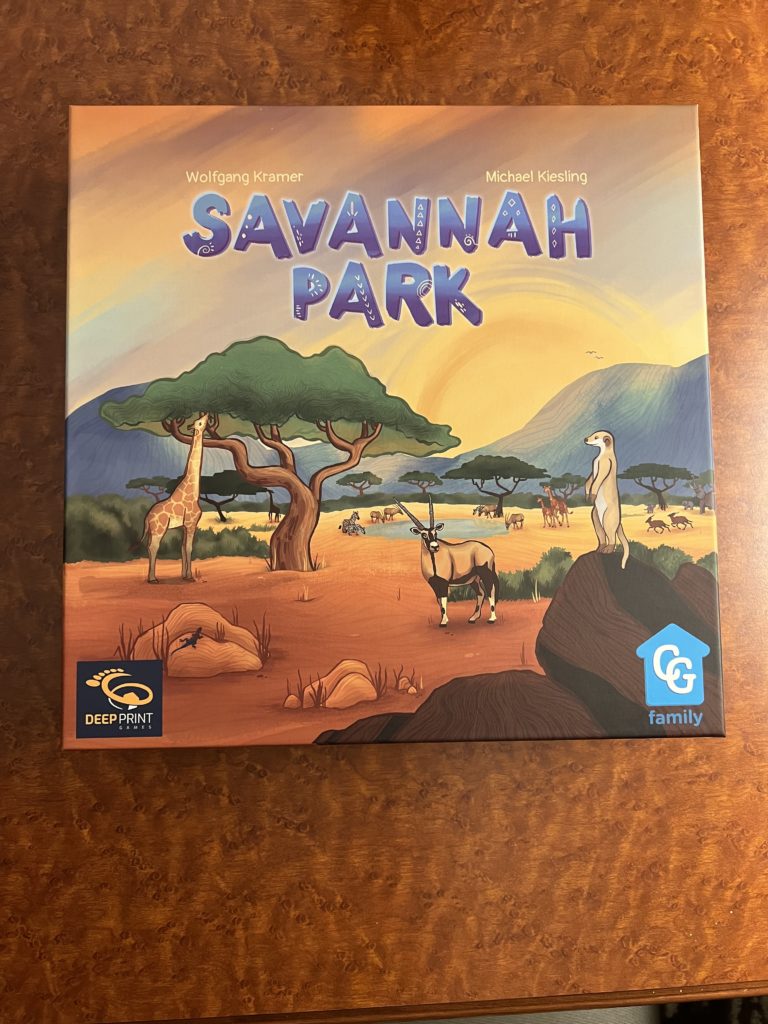
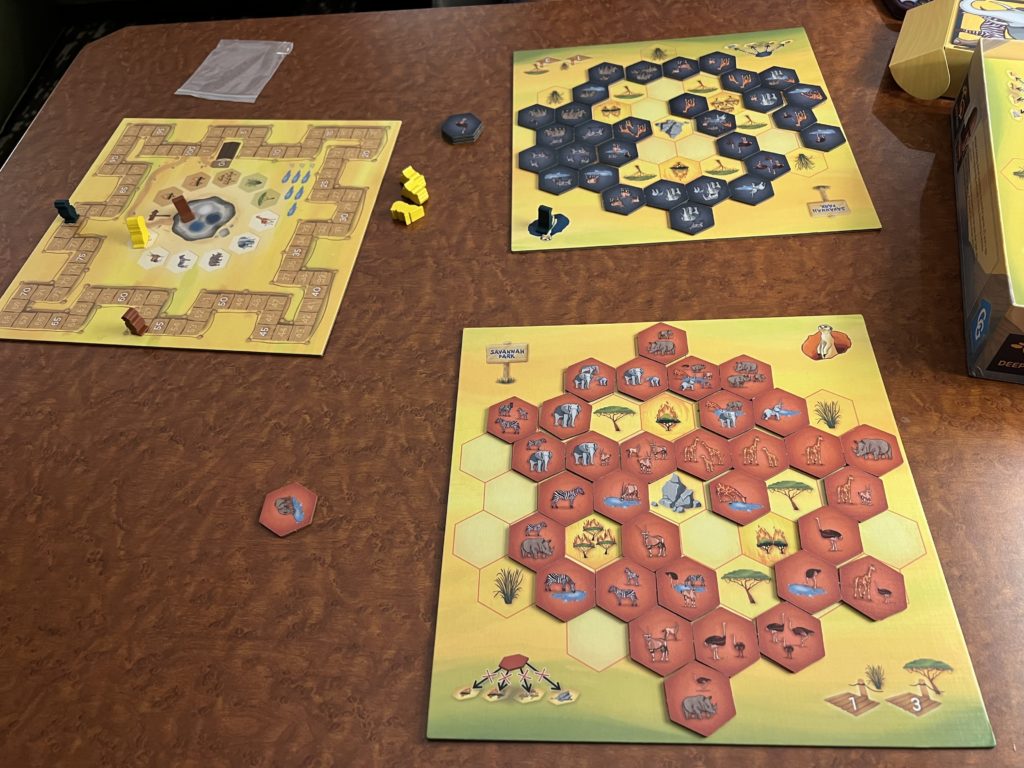
A hidden gem, I think. This one looked a little cartoony and simple, but turned out to be a thinker. I liked it a lot more than I expected.
In Savannah Park, you’re a park ranger trying to organize a random jumble of animals into contiguous herds, and avoid wildfires. You get points for having large herds of the same type of animal together, as long as there’s at least one watering hole in the group.
I wasn’t excited about this when we started setting it up, but it turned out to have a lot more depth than I anticipated. You randomly set up a lot of hex tiles on your board. Each tile has an animal or animals on it, some of them also have watering holes. Then, you take turns choosing a tile. Both players will pick up the same tile (“one elephant”, for example). Then, they’ll place the tile in an open space on their board. The tile is flipped on both boards to signify it has been moved. It’s locked in place for the rest of the game. Once all the tiles have been moved once, the game is over.
Seemed too simple and random, but it turns out to be quite the puzzle. There are two complications: One is that some tiles have multiple types of animals, and that tile will count in the herds for all the types of animals on it (e.g. there’s one tile with all the different animals). The other is that each board has three bush fires, with 1, 2 and 3 flames. At the end of the game — before scoring — any animal tiles touching bush fire tiles that have the same number of flames as animals (e.g. fire tile with 1 flame touching the tile with 1 elephant) get “scared off” and are removed from the board.
Because you can only move a tile to an empty spot, and there aren’t that many empty spots at the beginning of the game, you really have to plan ahead, and also hope your opponent doesn’t want to move a tile before you have its spot ready. It reminded me a bit of one of those 15-tile puzzles where you slide the tiles around to get them in order.
The components and art here are fine. I don’t particularly like the style, but at its heart it’s a good pattern building game that is virtually infinitely replayable. A nice surprise.
Curious Cargo
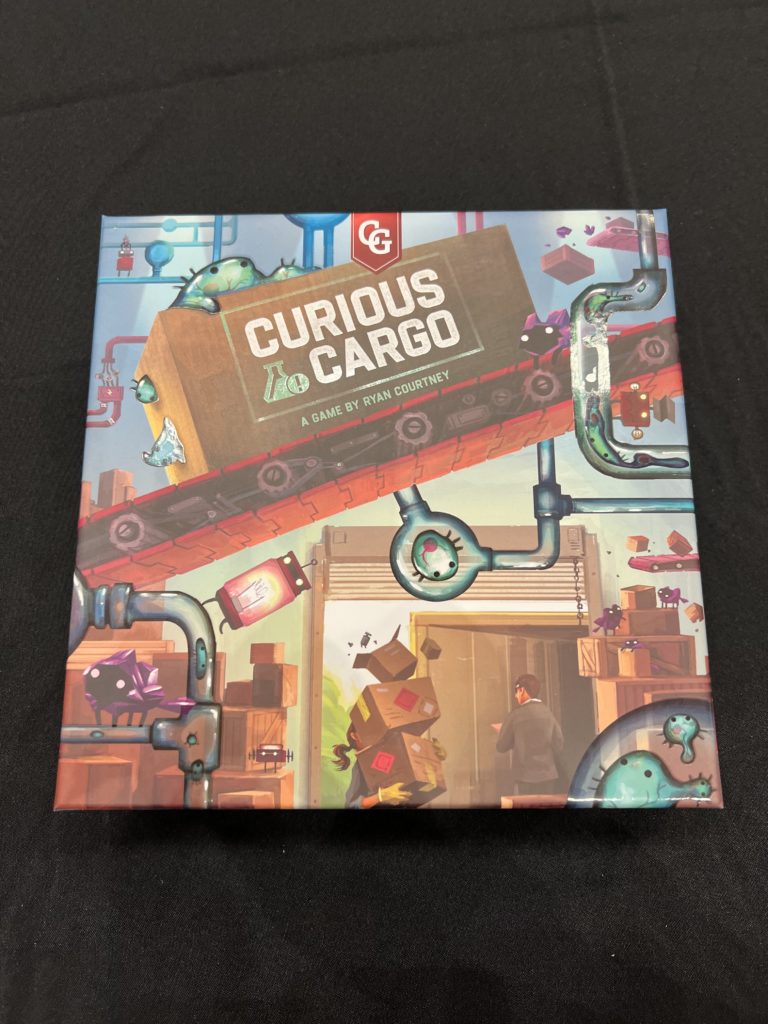
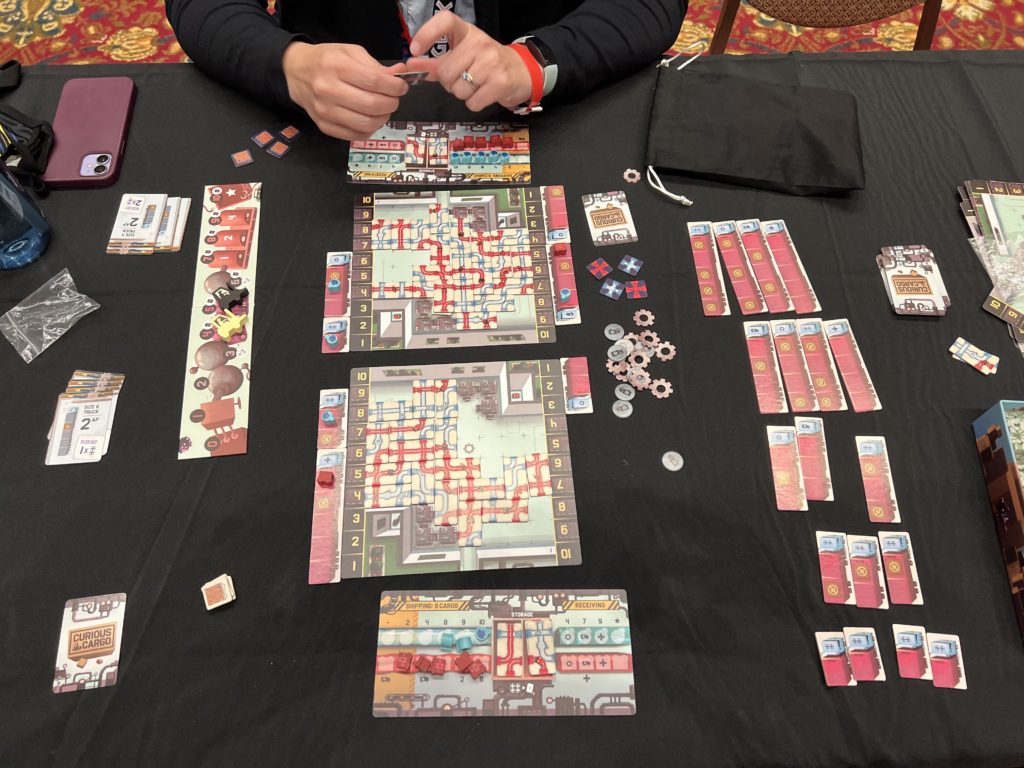
There is such a thing as too much choice. My wife and I watched video reviews of many of the games before the convention, so we’d know which ones we might be interested in and which ones to avoid. This was one I definitely wanted to try, and I’m glad we did. And I’m not so sure I wouldn’t play it again. But it’s a lot.
In Curious Cargo, you’re hooking up machines to supply and receive goods via pipes. You also ship and receive those goods on trucks. If you have a truck with an empty space next to a shipping space that’s hooked up with a pipe to a machine, you ship a good. If you have a truck with a good on it next to a receiving space that’s hooked up with a pipe to a machine, you receive a good. You can win the game by making lots of simultaneous connections, by shipping a lot of goods or by receiving a lot of goods.
If that sounds like a lot, it’s a lot. It feels like there’s about a game and a half packed in to this one. It was the second “heaviest” game we played at the convention, according to Board Game Geek ratings. And it felt that way.
It was difficult enough to make one connection from a machine to an edge space, and one of the win conditions is to have ten simultaneously. Each tile has a very large number of possible positions, and since you can stack tiles, that problem space is never reduced during the game. And you often have multiple tiles to choose from when considering placement.
The trucking phase has a lot less choice because you play trucks based on cards (a card deploys a specific truck), but because it took so long to start making the connections, it was tough to get started.
We wanted to get back for dinner, so we gave up on this one maybe half-way through (I say maybe because I really have no idea how long it would’ve lasted). There’s often a game or two where we finish and wonder if maybe we played it wrong because it seemed way too easy or way too difficult or just off. This one felt this way. I’m not sure we missed anything, I think it’s just very complex.
I’m not so sure I wouldn’t like it if I played it more. The art is good. The components are good. I even like the concept. And there’s a variant with three colors of pipes instead of two, in case the base game wasn’t complex enough as it is. But at least during an initial playthrough, this one kind of broke our brains, and not in a great way.
Welcome to the Moon
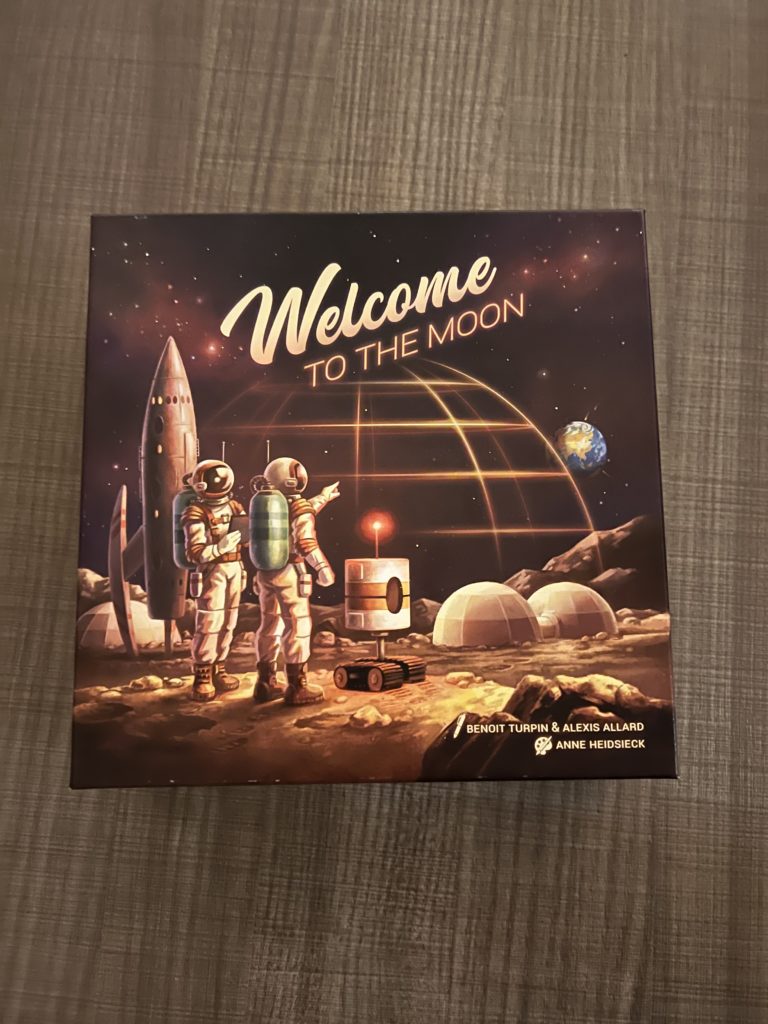
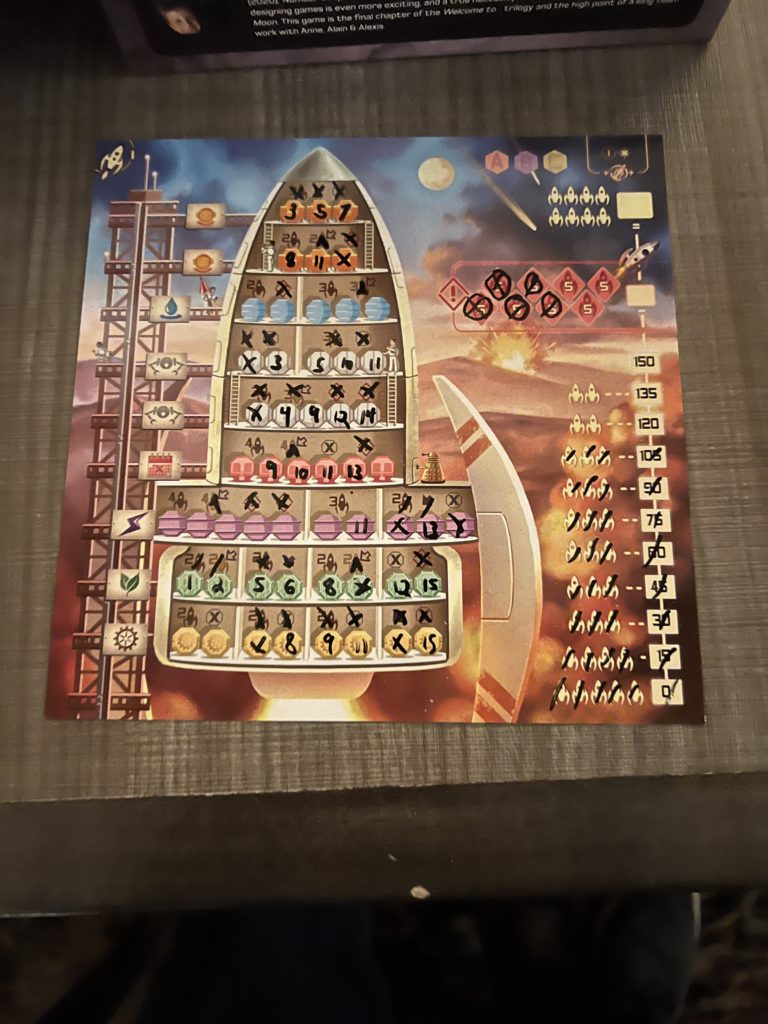
After meeting up with a few friends for dinner, we decided to check this one out since it could play up to six. I guess it could probably play up to infinity if you had enough score sheets. It’s a flip-and-write (similar to a roll-and-write) with a little player interaction.
Welcome to the Moon is part of a “Welcome to…” series. We played the first one, “Welcome to Your Perfect Home” at a previous Geekway, and enjoyed it. As with New York Zoo, this uses the same basic concept but builds on it significantly.
In Welcome to the Moon, you’re using the results of card combinations to fill in spots on your score sheet in numerical order. You can earn certain bonuses for filling in different sections, and kick off chain reactions. There are also a few missions all players are racing to complete. There are eight different adventures (we played the first one) and you can chain them all together in a campaign mode.
There were a surprising amount of instructions, and then when we got to the specific instructions for the first adventure, we found that some of the previous instructions didn’t seem to apply. But, once we got into the game, it went fast and made sense.
As with most of these roll-and-writes, there wasn’t a lot of player interaction. Occasionally someone triggers a “sabotage” that affects other players. And players race for objectives, getting more points for earning them first.
The theming is nice and the game is simple enough that it’s easy to pick up and play, but there’s enough depth to keep it interesting. And that’s all without playing the other adventures or campaign mode. I’d like to check those out to see what they’re like sometime. I liked this one.
Furnace
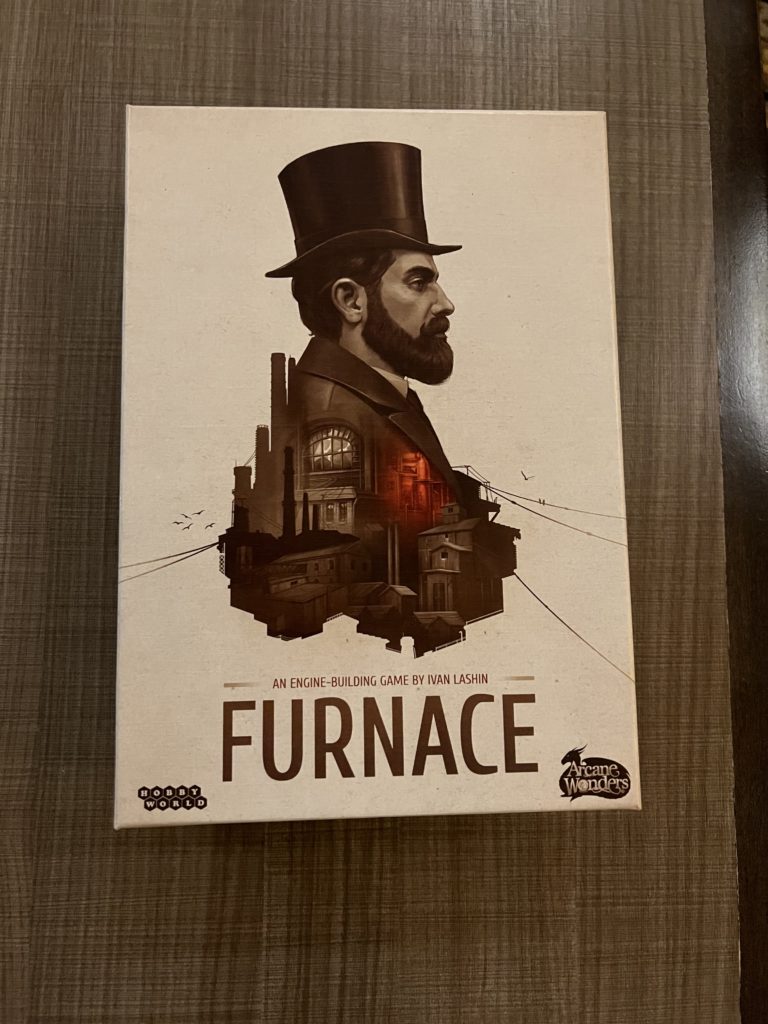
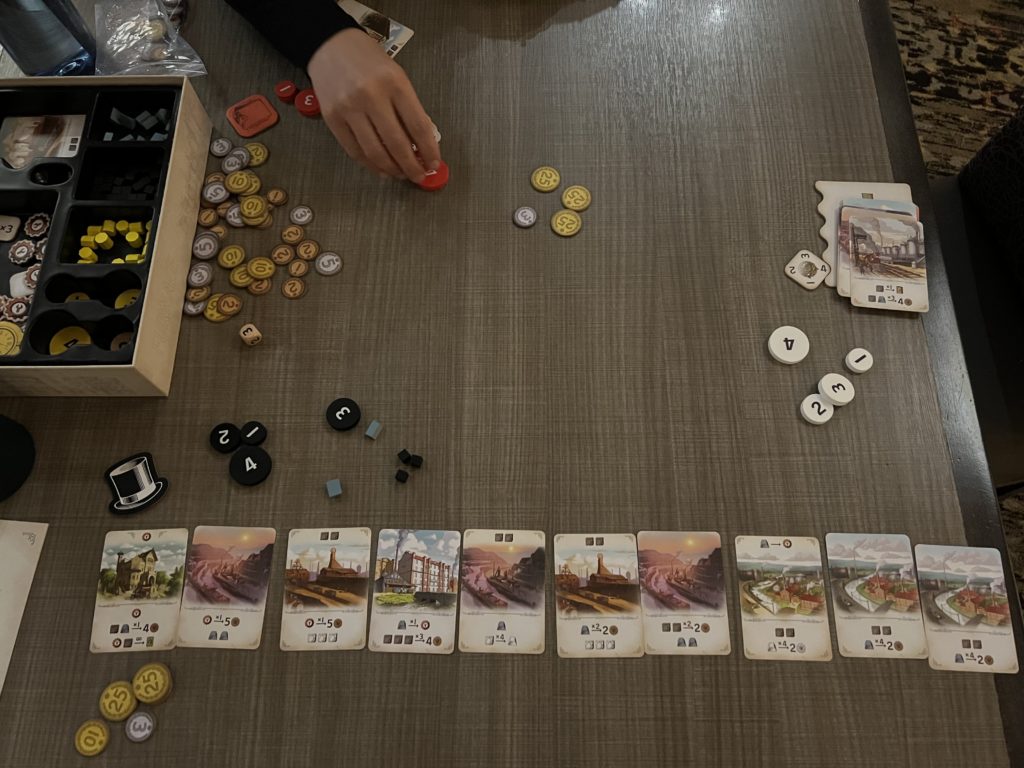
After watching some of the preview videos, this one was one I was really excited about. It’s a pretty compact game, components-wise, but has a ton of replayability built in.
Furnace is an engine-building game where you bid on factories and then use those factories to gain resources and convert them into cash. We played this at two, where there’s a dummy third player for the bidding round, which works surprisingly well. Oh, and there are only four rounds, so it goes by pretty quickly and every choice feels important.
The bidding mechanism is interesting. Each player has wooden tokens labeled 1-4 (and sized respectively). The highest bid on a factory wins it. But, if you bid on a factory you don’t win, you get some compensation that’s listed on the card, and you multiply it by your non-winning bid. So if I bid 3 and you bid 4, you get the factory, but I get whatever compensation is listed on the card, times 3.
Once the factories and compensation are awarded, it’s time to run your production chain. You activate your factories one by one, but only once each per round. So, you have to decide the most efficient order to activate them in, in order to produce resources, convert them into other resources, or convert them into money (which is what is scored at the end of the game). You also can produce and use upgrade tokens to upgrade your factories to perform an additional function.
There is also a variant where you run your factory in order from left to right, so when you win a new factory from the auction you have to decide where to place it but then must leave it there for the rest of the game. The game is complex enough without that, I think, but it might be an interesting challenge once you’re more familiar with the game.
I thought I’d really like this one, and I did. The art and style is great. The components, especially the auction disks, are well done. It’s short, and pretty fast once you understand what you’re doing. The engine building is fun. The only sticking point is that once you’ve accumulated more than a few factories, you have a lot of choices for what order to activate them in, which can be a little overwhelming. But since you’re building your empire factory-by-factory, you usually have a good idea of where a new one might slot in in the order. And of course if you’re playing the variant that runs them right to left your choice is limited to where you place the factory when you get it.
Day 1 wrapup
And that was day 1. If I had to rank these games, I’d probably go:
1) Furnace
2) Caper: Europe
3) Savannah Park
4) New York Zoo
5) Welcome to the Moon
6) Curious Cargo
But I don’t like ranking games — too much depends on my mood. Savannah Park and New York Zoo are probably virtually tied. Welcome to the Moon seems like a different type of game altogether — good if there are a lot of people, and good if I want to play a game on my own or maybe even do a campaign-style thing. Even Curious Cargo may be getting short shrift here if I played it more.
Anyhow, those are the six we played on Day 1 of Geekway 2022.
